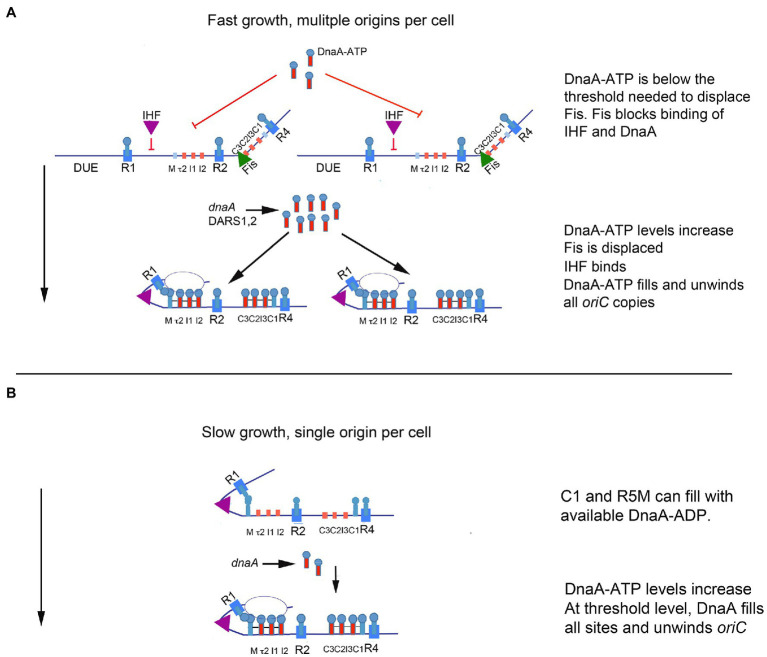Figure 3.
Model of orisome assembly in fast and slow growing cells. (A) In rapidly growing cells, DnaA-ATP site occupation is regulated by Fis. Bound Fis prevents free DnaA-ATP from occupying oriC and excess DnaA-ATP (provided by new synthesis and DARS2) accumulates. When sufficient DnaA-ATP becomes available, Fis is displaced. Loss of Fis allows IHF to bind to oriC, and available DnaA-ATP binds to low affinity sites on all oriC copies in the cell. Orisome assembly may be completed by an initiation cascade (see text for details). (B) In slowly growing cells, cells contain a single copy of oriC, bound to IHF throughout the cell cycle. All low affinity DnaA-ATP sites become occupied as DnaA-ATP becomes available (see text for details). When enough DnaA-ATP has accumulated to fill all sites in the left region of oriC, the origin is unwound. The figure is adapted from Rao et al. (2018).

